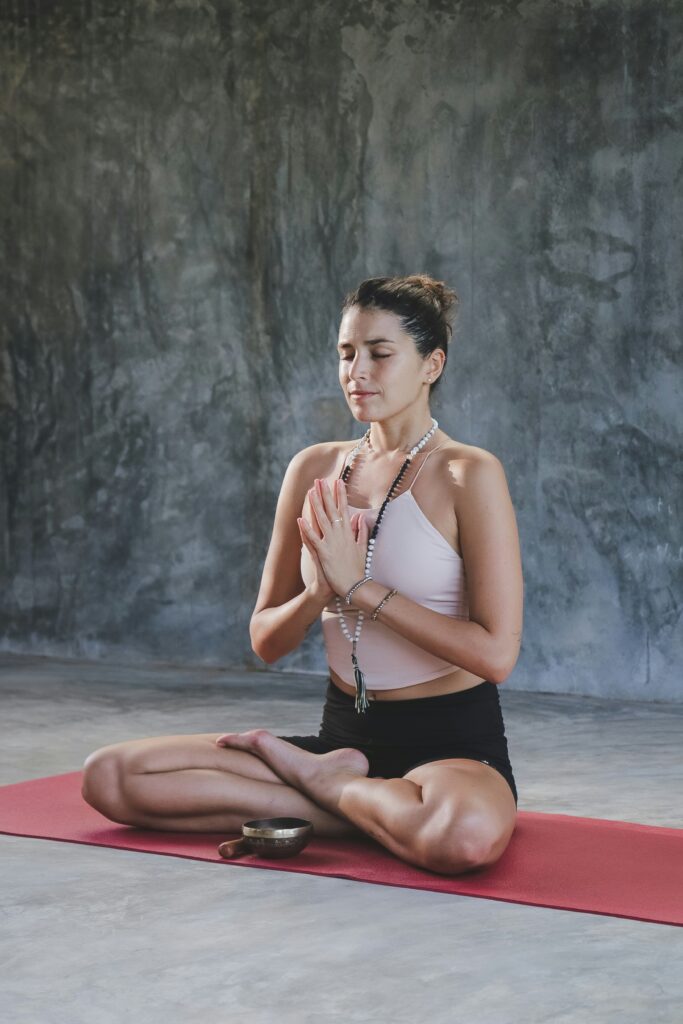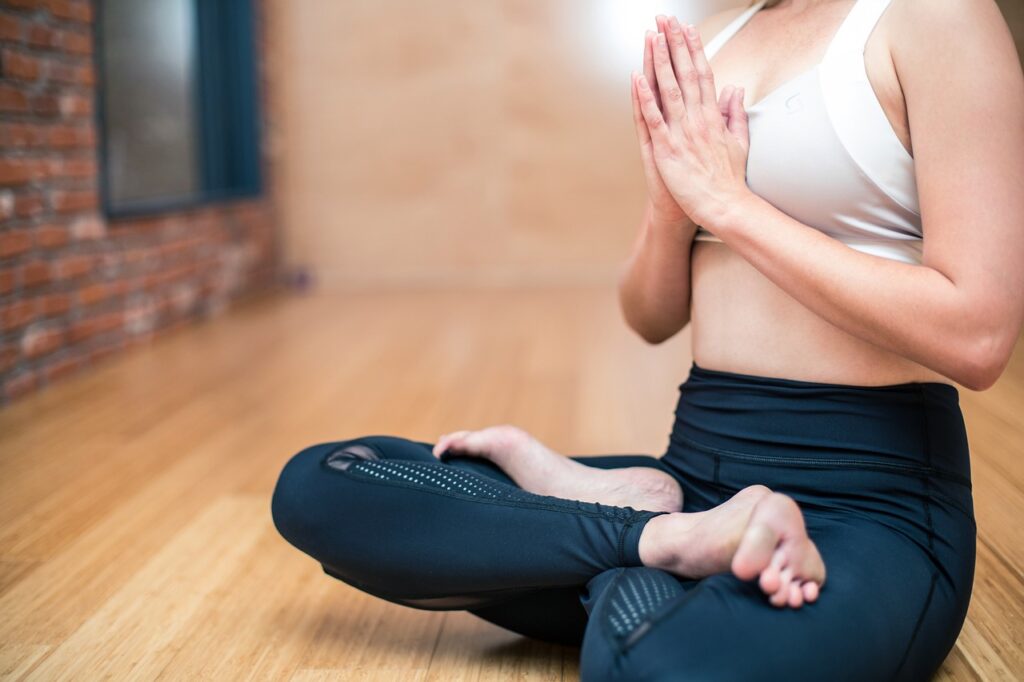Yoga is a transformative practice that nurtures both the body and mind, offering a sanctuary from the chaos of daily life. As stress becomes increasingly prevalent in our fast-paced society, the need for effective coping mechanisms has never been more essential. Yoga, with its unique blend of physical postures, breath control, and meditation techniques, provides an effective antidote to the pressures we face. By encouraging mindfulness and promoting relaxation, yoga allows individuals to cultivate a deeper connection with themselves, fostering inner peace and resilience. Whether you’re seeking to release tension, enhance emotional well-being, or improve overall health, yoga can serve as a powerful tool for stress relief. Through regular practice, you’ll discover not only improved physical flexibility and strength but also a profound sense of tranquility that can positively impact all areas of your life. Embrace the journey of self-discovery and healing that yoga offers, and unlock the path to lasting relaxation.
What is Yoga for Stress Relief and Relaxation?
Yoga for stress relief and relaxation is a holistic practice that combines physical postures, breathing exercises, and meditation to alleviate tension and promote inner peace. It encourages mindfulness, allowing individuals to become more aware of their thoughts and emotions. Through deep breathing techniques, yoga enhances oxygen flow, calming the nervous system. Gentle stretches and movements release physical tension stored in the body. The meditative aspect of yoga fosters a state of mental clarity, enabling practitioners to cope with stress more effectively. In essence, yoga offers a comprehensive toolkit for reducing stress and enhancing relaxation.
What Are the Benefits of Yoga for Stress Relief and Relaxation?
- Reduces Anxiety
- Improves Sleep Quality
- Enhances Emotional Resilience
- Promotes Mindfulness
- Boosts Overall Well-Being
1. Reduces Anxiety
Yoga significantly reduces anxiety levels by encouraging relaxation and promoting a sense of calm. The focus on deep, controlled breathing activates the parasympathetic nervous system, which counters the body’s stress response and lowers cortisol levels. Engaging in yoga poses allows for the release of pent-up emotions, creating a profound sense of relief that can be physically and mentally liberating. Furthermore, practicing yoga regularly fosters a mindset of peace and mindfulness, enabling individuals to respond to stressors with greater clarity and composure. This holistic approach to mental health not only alleviates anxiety but also cultivates emotional resilience, empowering practitioners to navigate life’s challenges with increased confidence and stability. Over time, this consistent practice helps individuals develop healthier coping mechanisms, ultimately leading to a more balanced and fulfilling life.
2. Improves Sleep Quality

Incorporating yoga into your evening routine can significantly enhance sleep quality. Gentle stretches and relaxation techniques help release the physical tension accumulated throughout the day, promoting a sense of relief and comfort. By gently easing into restorative poses, the body gradually unwinds, signaling that it’s time to relax. Breathing exercises further promote a state of calm, making it easier to fall asleep by reducing heart rates and calming the mind. Practicing mindfulness through yoga encourages individuals to let go of racing thoughts and distractions that often interfere with restful sleep. As a result, this nightly ritual fosters a peaceful transition into slumber, leading to more restorative and rejuvenating rest.
3. Enhances Emotional Resilience
Yoga cultivates emotional resilience by helping individuals better manage their emotions and reactions. Through mindfulness practices, practitioners develop self-awareness, enabling them to identify and address negative thought patterns that may arise during stressful situations. This awareness fosters emotional intelligence, allowing individuals to respond to challenges more thoughtfully rather than reacting impulsively. Regular practice encourages a non-reactive mindset, promoting a sense of calm even amidst chaos. Furthermore, yoga creates a supportive community where individuals can share their experiences and find encouragement. This sense of belonging reinforces the understanding that everyone faces struggles, fostering connection and collective growth on the journey toward emotional well-being.
4. Promotes Mindfulness
Practicing yoga fosters mindfulness, which is crucial for stress relief. Being present in the moment helps shift focus away from stressors and worries, allowing individuals to cultivate a sense of peace. Through mindful movements and breath awareness, practitioners learn to embrace each moment without judgment, encouraging a deeper connection to their thoughts and emotions. This heightened state of awareness not only enhances the yoga experience but also carries over into daily life, promoting a more balanced approach to challenges. As individuals become more attuned to their feelings and reactions, they can respond to stress with greater clarity and calmness, ultimately enhancing their overall well-being. This transformative aspect of yoga empowers individuals to navigate life’s complexities with resilience and grace.
5. Boosts Overall Well-Being
Yoga contributes to overall well-being by promoting a balanced lifestyle. The physical activity involved in yoga enhances strength and flexibility, significantly improving physical health. This increased physical capability not only aids in daily activities, such as lifting, bending, and maintaining posture, but also reduces the risk of injuries, especially as one ages. The mental and emotional benefits of yoga lead to improved self-esteem and confidence, empowering individuals to navigate life’s challenges with greater ease and resilience. The holistic nature of yoga encourages a deeper connection to oneself, fostering a sense of purpose and fulfillment that extends beyond the mat. Through consistent practice, yoga becomes a guiding force for maintaining harmony and balance in both body and mind, ultimately contributing to a healthier and more fulfilling life. Whether it’s through stress reduction, increased vitality, or enhanced emotional well-being, the benefits of yoga are profound and far-reaching.
How to Reap the Benefits of Yoga for Stress Relief and Relaxation?
- Establish a Regular Practice
- Incorporate Breathing Techniques
- Join a Yoga Class
- Create a Calm Environment
- Explore Different Styles of Yoga
1. Establish a Regular Practice
To reap the benefits of yoga, establishing a regular practice is essential for achieving long-term results. Consistency creates a routine that becomes ingrained in your lifestyle, making it easier to integrate yoga into your daily activities. By committing to a set schedule, you ensure that you prioritize your well-being amid life’s many demands. Practicing regularly fosters a deeper connection to the techniques, enhancing their effectiveness over time. As you engage with yoga on a consistent basis, you’ll likely notice improvements not only in your physical abilities but also in your mental clarity and emotional resilience. This commitment becomes a valuable investment in your overall health and happiness, allowing you to navigate life’s challenges with greater ease and confidence.
2. Incorporate Breathing Techniques

Integrating specific breathing techniques into your yoga practice amplifies its stress-relieving benefits. Practicing deep abdominal breathing not only calms the mind but also lowers heart rates, promoting a sense of relaxation throughout the body. Techniques such as alternate nostril breathing balance energy and promote tranquility by harmonizing the left and right hemispheres of the brain. This balance fosters emotional stability and mental clarity. Additionally, becoming aware of your breath during yoga poses enhances the overall experience, grounding you in the present moment and allowing you to fully immerse yourself in the practice. This mindful breathing encourages a deeper connection to both body and mind, enriching your yoga journey and maximizing its calming effects.
3. Join a Yoga Class
Participating in a yoga class offers numerous advantages for stress relief. Guided sessions led by experienced instructors provide valuable insights and corrections, ensuring that practitioners perform poses safely and effectively. This personalized guidance helps individuals deepen their practice and improve their skills. The communal aspect of yoga classes fosters a sense of belonging, creating support networks among participants who share similar goals. Sharing the practice with others encourages motivation and accountability, enhancing your commitment to regular practice. Additionally, being part of a group can create a positive atmosphere that elevates your mood and reinforces the benefits of yoga, making each session more enjoyable and fulfilling.
4. Create a Calm Environment
Creating a calming environment is key to enhancing your yoga practice. Choosing a quiet space free from distractions allows you to focus entirely on your movements and breath, facilitating a deeper state of relaxation. Incorporating elements like soft lighting and calming scents can elevate the atmosphere, making it more conducive to meditation and mindfulness. Comfortable props, such as cushions or blankets, support your body, promoting proper alignment and ease in each pose. Personalizing your space with items that inspire peace—such as candles, essential oils, or plants—can deepen your connection to the practice, making each session feel sacred and uniquely yours. This intentional setup transforms your practice space into a sanctuary, encouraging a more profound and meaningful experience.
5. Explore Different Styles of Yoga
Exploring different styles of yoga allows you to find the best fit for your needs and preferences. Hatha and Yin yoga, for instance, emphasize gentle movements and relaxation, making them ideal for stress relief and a calming practice. In contrast, Vinyasa and Ashtanga offer more dynamic practices that build strength, flexibility, and endurance while still promoting mindfulness and breath awareness. By experimenting with various styles, you can discover what resonates most with you, helping to address specific physical or emotional challenges. This diversity keeps your practice fresh and engaging, preventing monotony and enhancing its effectiveness over time. Ultimately, finding the right style can deepen your connection to yoga and its benefits, empowering you to cultivate a more balanced and fulfilling practice.
Conclusion
Yoga for stress relief and relaxation is a transformative practice that offers a multitude of benefits for the mind and body. This ancient discipline helps individuals reduce anxiety and enhance emotional resilience, equipping them with essential tools to cope with life’s challenges more effectively. Incorporating various breathing techniques, such as deep abdominal breathing, alongside establishing a regular practice amplifies its effects, leading to lasting change. As you explore different styles of yoga and cultivate a calming environment, you’ll discover a path toward greater tranquility and overall well-being. Embracing yoga can foster a more balanced, fulfilling life, making it a vital practice for anyone seeking lasting relief from stress and a deeper connection to themselves. By prioritizing this practice, individuals can navigate the complexities of modern life with a renewed sense of calm and purpose.






